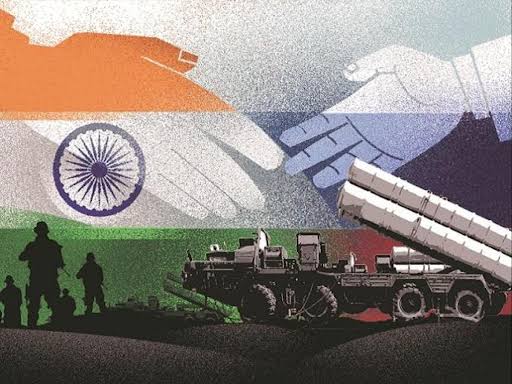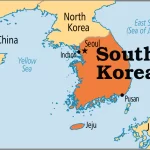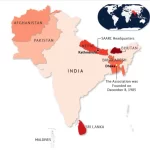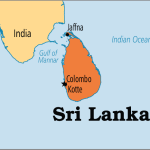
• The Countering America’s Adversaries Through Sanctions Act (CAATSA) is a US government law that put sanctions on Iran, North Korea, and Russia.
• This act makes it illegal for trade allies of the U.S. to make bilateral deals with these three countries.
• The US said that Russia’s alleged meddling in the 2016 presidential election and its part in the Syrian war were some of the reasons why it was punishing its relationship with Russia.
• It’s a law that started in 2017 in the US.
• Title II of the Act is mostly about putting sanctions on Russia’s oil and gas industry, defence and security sector, and financial institutions because of its military involvement in Ukraine and alleged interference in the 2016 US Presidential elections.
• Section 231 of the Act gives the US President the power to place at least five of the 12 sanctions listed in Section 235 of the Act on people who do a “significant transaction” with the Russian defence and intelligence sectors.
As part of Section 231 of the Act, the US State Department has told 39 Russian companies (like Rosoboronexport, Sukhoi Aviation, and Russian Aircraft Corporation MiG) that doing business with them could make third parties subject to penalties.
Almaz-Antey Air and Space Defence Corporation JSC is on this list. They are the ones who made the S-400 system.
Table of Contents
Sanctions that can Impact India:
• There are only two penalties that could hurt the relationship between India and Russia or between India and the United States.
Bank transfers aren’t allowed: The “Prohibition of Banking transactions” is expected to have an effect on relations between India and Russia.
o This would make it hard for India to pay Russia in US dollars for the S-400 weapons it wants to buy. It will also make it harder for India to buy repair parts, components, raw materials, and other help.
• In 2020, Turkey had to pay a fine because it bought the S-400 system.
Export Ban: The ban will have bigger effects on the relationship between India and the US.
o This is the “export sanction” that could put an end to the India-US Strategic and Defence Partnership because it makes it impossible to sell or get a licence for any US-controlled items.
Waiver Criteria:
• In 2018, the US President got the power to waive CAATSA penalties on a case-by-case basis.
Implications for India regarding CAATSA
• The relationship between India and the United States has grown by leaps and bounds since 2008. This is especially true when it comes to defence. India has bought about $15 billion worth of weapons as of 2019. In the past, India has also bought its weapons and the words that came with them from Russia since the Cold War. Keeping this in mind, US lawmakers told the senate that the penalties shouldn’t hurt important defence partners like India.
• A CAATSA waiver for India has been on the table since the law went into effect, but not much progress has been made in this area. When India chose to buy S-400 missile launchers from Russia and crude oil from Iran, it was actually threatened with sanctions. India is also worried because Turkey, which is a key NATO partner, was kicked out of the US F-35 fighter jet programme because it bought S-400 missile systems from Russia.
• However, India went ahead with the S-400 deal in 2018, and the US government didn’t say anything bad about it. By 2025, all of the S-400s should have been sent out.
• Recently, the US government said that a waiver is not possible right now, but in July 2022, the US House of Representatives passed an amendment to the National Defence Authorization Act (NDAA) that proposed a waiver for India under the Countering America’s Adversaries Through Sanctions Act (CAATSA).
It will let India buy the S-400 missile system from Russia without having to worry about American penalties.
What does the CAATSA Waiver mean for the relationship between India and the US?
• The NDAA change also asked the US to take more steps to help India stop relying on weapons made in Russia.
• The change fits in with how the two countries have been getting along lately.
The turning point was in 2008, and since then, the US has signed at least USD 20 billion worth of defence deals with India. In the years before 2008, it was only $500 million.
Also, the US acknowledged India as a major defence partner in 2016. Through groups like Quad and now I2U2, strategic ties have also been improved.
• India would be better off from a strategic point of view if it stopped using Russian tools.
After Russia’s attack of Ukraine, it has become much more dependent on China, and this is not likely to change in the near future.
Already, China is only second to India in terms of how many weapons it buys from Russia.
Given that India’s long-standing border management agreements with China are falling apart, it is not smart to count on Russian arms platforms.
Criticism against CAATSA
• It should come as no surprise that North Korea, Russia, and Iran have laughed at the Countering America’s Adversaries Through Sanctions Act.
• But the U.S.’s enemies aren’t the only ones who don’t like the CAATSA. Some of the U.S.’s most important allies, like the European Union, think it hurts U.S.-European ties because many of them have signed gas line projects with Russia.
• Geopolitical think tanks have said that the CAATSA will make it harder for the US’s Asian partners to fight back against China’s growing power.
• Another implication is that this would make other countries less likely to build defensive relationships with the U.S. in order to escape having to give up strategic autonomy in the future.
• These experts think that if the CAATSA is put into place without much thought, it could hurt U.S. policy in the near future.
Russia’s S-400 Missile System
It is a mobile Surface-to-Air Missile system (SAM) made by Russia. It is the most dangerous operationally deployed Modern Long-Range SAM (MLR SAM) in the world, even more dangerous than the US-made Terminal High Altitude Area Defence system (THAAD). It combines a multifunction radar, autonomous detection and targeting systems, anti-aircraft missile systems, launchers, and a command and control centre.
It can fire three different types of missiles to create a layered defence. The system can track 100 airborne targets and attack six of them at once.
• From India’s point of view, the fact that China is also getting the system is important. China and Russia made a deal in 2015 for China to buy six companies of the system. It began to be sent out in January 2018.
The S-400 weapon that China bought has been called a “game changer” in the area. But it doesn’t do much to help against India.
In a war with two fronts, India’s purchase is important for fighting back against attacks, even from high-tech US fighter planes like the F-35.
















